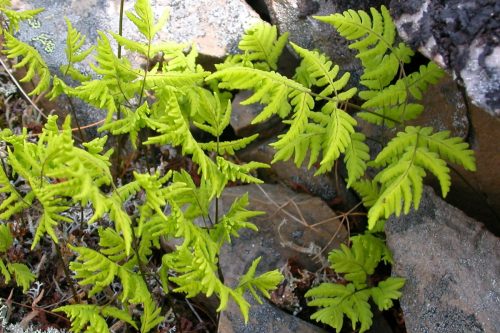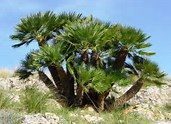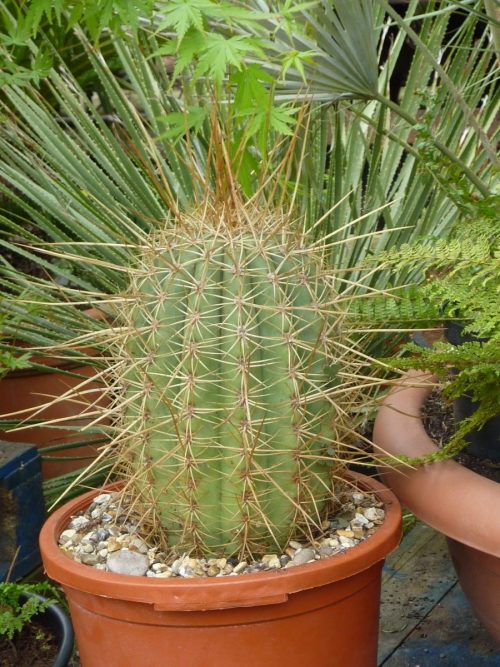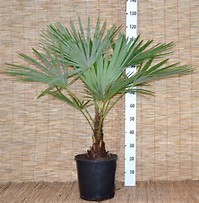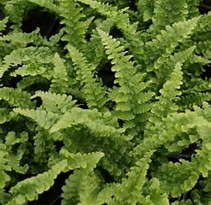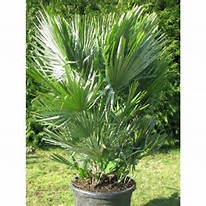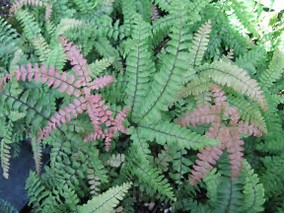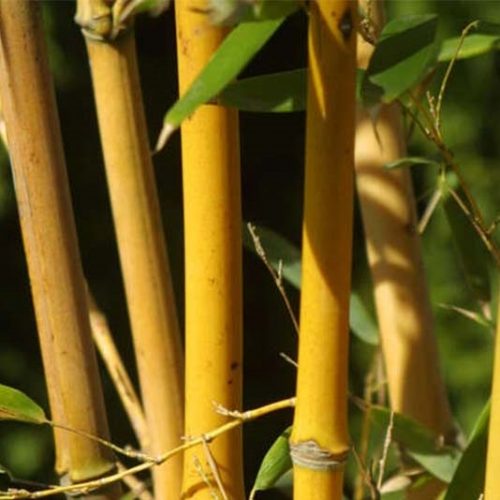-
 This is one of many Phyllostachys species that are superficially 'just' plain green but Phyllostachys bissetii stands out from the crowd because it excels at what it does - it is extremely hardy and tolerant. It is one of the freshest looking bamboos at winter's end - its thickly growing foliage and densely clustered canes are almost completely windproof, thereby making a perfect screening or hedging plant. Ultimately a running bamboo, Phyllostachys bissetii benefits from barrier protection although it can remain compact for some years before taking off.
This is one of many Phyllostachys species that are superficially 'just' plain green but Phyllostachys bissetii stands out from the crowd because it excels at what it does - it is extremely hardy and tolerant. It is one of the freshest looking bamboos at winter's end - its thickly growing foliage and densely clustered canes are almost completely windproof, thereby making a perfect screening or hedging plant. Ultimately a running bamboo, Phyllostachys bissetii benefits from barrier protection although it can remain compact for some years before taking off. -
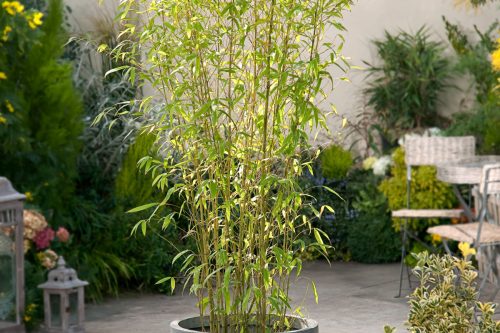 Phyllostachys Aurea (Yellow Bamboo) is originally from China and grows up to 4-6 m, it is clump forming and withstand -18c. The canes of Phyllostachys Aurea (Yellow Bamboo) are a soft yellow in the sun and olive green in the shade, excellent for hedging, screening, and isolated clumps or a potted specimen.
Phyllostachys Aurea (Yellow Bamboo) is originally from China and grows up to 4-6 m, it is clump forming and withstand -18c. The canes of Phyllostachys Aurea (Yellow Bamboo) are a soft yellow in the sun and olive green in the shade, excellent for hedging, screening, and isolated clumps or a potted specimen. -
Out of stock
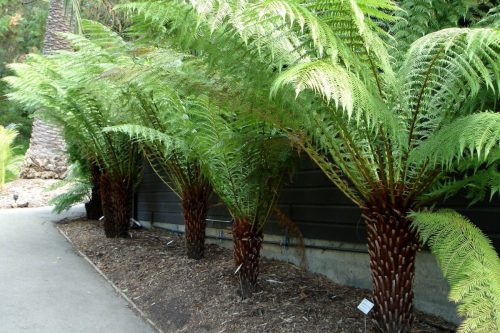 Tree Ferns This is one of the best known and one of the hardiest tree fern from Australia. This is a pride of every garden – large, bold, ancient and beautiful. If possible avoid windy sites and protect crown in winter.
Tree Ferns This is one of the best known and one of the hardiest tree fern from Australia. This is a pride of every garden – large, bold, ancient and beautiful. If possible avoid windy sites and protect crown in winter. -

 Dasylirion quadrangulatum is the correct name for a plant long known as Dasylirion longissimum. It is a succulent plant related to Yucca and Agave that slowly grows a thick, beautifully scarred trunk from which erupts a tufted head of narrow, rigid, 4-angled green leaves, each with a slightly withered tip, reminiscent of a fibre-optic lamp.
Dasylirion quadrangulatum is the correct name for a plant long known as Dasylirion longissimum. It is a succulent plant related to Yucca and Agave that slowly grows a thick, beautifully scarred trunk from which erupts a tufted head of narrow, rigid, 4-angled green leaves, each with a slightly withered tip, reminiscent of a fibre-optic lamp. -
 A new addition from Japan a fabulous architectural palm and perfect for the smaller garden. ‘Miniature’ is somewhat misleading as this relates to the stiff-leaves which even on mature tress are no more than a couple of feet across, half that of the Trachycarpus Fortunei. It is considerably more wind tolerant than its cousins and for this reason this is perfect on more exposed sites – a must for every garden.
A new addition from Japan a fabulous architectural palm and perfect for the smaller garden. ‘Miniature’ is somewhat misleading as this relates to the stiff-leaves which even on mature tress are no more than a couple of feet across, half that of the Trachycarpus Fortunei. It is considerably more wind tolerant than its cousins and for this reason this is perfect on more exposed sites – a must for every garden. -
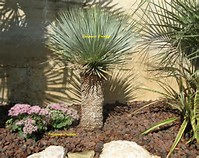
 A native to the Chihuahuan Desert, inhabits western Texas and northern Mexico in the states of Chihuahua and Coahuila. Yucca rostrata, or Beaked Yucca, is typically found growing on rocky bajadas, slopes, or ridges that are comprised of limestone gravel. Beaked Yucca is a single-trunked arborescent yucca that reaches heights of 6-15 feet. Mature plants may branch and become multi-headed
A native to the Chihuahuan Desert, inhabits western Texas and northern Mexico in the states of Chihuahua and Coahuila. Yucca rostrata, or Beaked Yucca, is typically found growing on rocky bajadas, slopes, or ridges that are comprised of limestone gravel. Beaked Yucca is a single-trunked arborescent yucca that reaches heights of 6-15 feet. Mature plants may branch and become multi-headed -
 Yucca linearifolia ‘blue form’, also called Y.linearis. It has flexible, short green leaves up to 30-50 cm long, forming a perfectly spherical head. If through circumstances the base of the trunk is rotten, it can be cut off and the plant will make new roots via de outer trunk layer. Another remarkable quality is that if the crown is rotten you can treat it for mould and this plant will make new crowns. This plant can withstand temperatures down to -15 degrees Celsius.
Yucca linearifolia ‘blue form’, also called Y.linearis. It has flexible, short green leaves up to 30-50 cm long, forming a perfectly spherical head. If through circumstances the base of the trunk is rotten, it can be cut off and the plant will make new roots via de outer trunk layer. Another remarkable quality is that if the crown is rotten you can treat it for mould and this plant will make new crowns. This plant can withstand temperatures down to -15 degrees Celsius. -
 Adiantum aleuticum is very similar to A. pedatum but noticeably different when compared together. Adiantum aleuticum is native to the western half of North America and East Asia. It is a very hardy fern, and, despite its delicate appearance, very tough. 'Imbricatum' is a dwarf selection with green to blue-green foliage and purple wiry rachis. This variety forms a dense clump and is very easy to establish in good humus-rich, moist soil in shade.
Adiantum aleuticum is very similar to A. pedatum but noticeably different when compared together. Adiantum aleuticum is native to the western half of North America and East Asia. It is a very hardy fern, and, despite its delicate appearance, very tough. 'Imbricatum' is a dwarf selection with green to blue-green foliage and purple wiry rachis. This variety forms a dense clump and is very easy to establish in good humus-rich, moist soil in shade. -
 From Brazil, one of the hardiest feather palms, Butia will withstand -10 or -12C when larger. Beautiful blue-green leaves, strongly recurved, make it instantly recognisable. An essential palm for the exotic garden. Tolerant of the weather in high rainfall regions. Also wonderful as a conservatory palm, or even indoors if the light is bright enough. Ultimately it can grow to about 10 or 20 feet, though this will take some years
From Brazil, one of the hardiest feather palms, Butia will withstand -10 or -12C when larger. Beautiful blue-green leaves, strongly recurved, make it instantly recognisable. An essential palm for the exotic garden. Tolerant of the weather in high rainfall regions. Also wonderful as a conservatory palm, or even indoors if the light is bright enough. Ultimately it can grow to about 10 or 20 feet, though this will take some years -
 In the wild Cycas revoluta is restricted to a few of the islands of the Japanese archipelago but, worldwide, it is the most commonly cultivated cycad. This is due to its ease of culture and ability to withstand a wide range of conditions. In appearance it is the archetypical cycad forming, in time, a tall rough trunk and with crown of glossy deep green leaves at the top and often surrounded by offsets. Indoors it is best grown in a bright position or conservatory. The Sago Palm is also one of the few cycads worth trying outdoors in a milder garden,
In the wild Cycas revoluta is restricted to a few of the islands of the Japanese archipelago but, worldwide, it is the most commonly cultivated cycad. This is due to its ease of culture and ability to withstand a wide range of conditions. In appearance it is the archetypical cycad forming, in time, a tall rough trunk and with crown of glossy deep green leaves at the top and often surrounded by offsets. Indoors it is best grown in a bright position or conservatory. The Sago Palm is also one of the few cycads worth trying outdoors in a milder garden, -
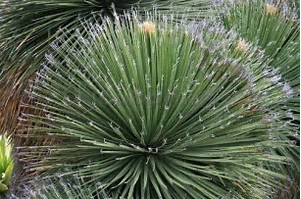 Dasylirion serratifolium is a species of Sotol from southern Mexico. However, in cultivation it is more of a 'catch-all' name for a mixed group of hybrids that have green leaves with toothed margins and terminal tufts. For all practical purposes this is unimportant to anyone other than a dasylirion specialist - in the garden they make a stunning focal point for the arid border along with Yucca, Nolina, Agave and Chamaerops with their fine-leafed 'fibre-optic lamp' appearance that contrasts well with other spiky plants. Alternatively their shape is perfect for pot culture, when they can be taken under glass for winter.
Dasylirion serratifolium is a species of Sotol from southern Mexico. However, in cultivation it is more of a 'catch-all' name for a mixed group of hybrids that have green leaves with toothed margins and terminal tufts. For all practical purposes this is unimportant to anyone other than a dasylirion specialist - in the garden they make a stunning focal point for the arid border along with Yucca, Nolina, Agave and Chamaerops with their fine-leafed 'fibre-optic lamp' appearance that contrasts well with other spiky plants. Alternatively their shape is perfect for pot culture, when they can be taken under glass for winter.

